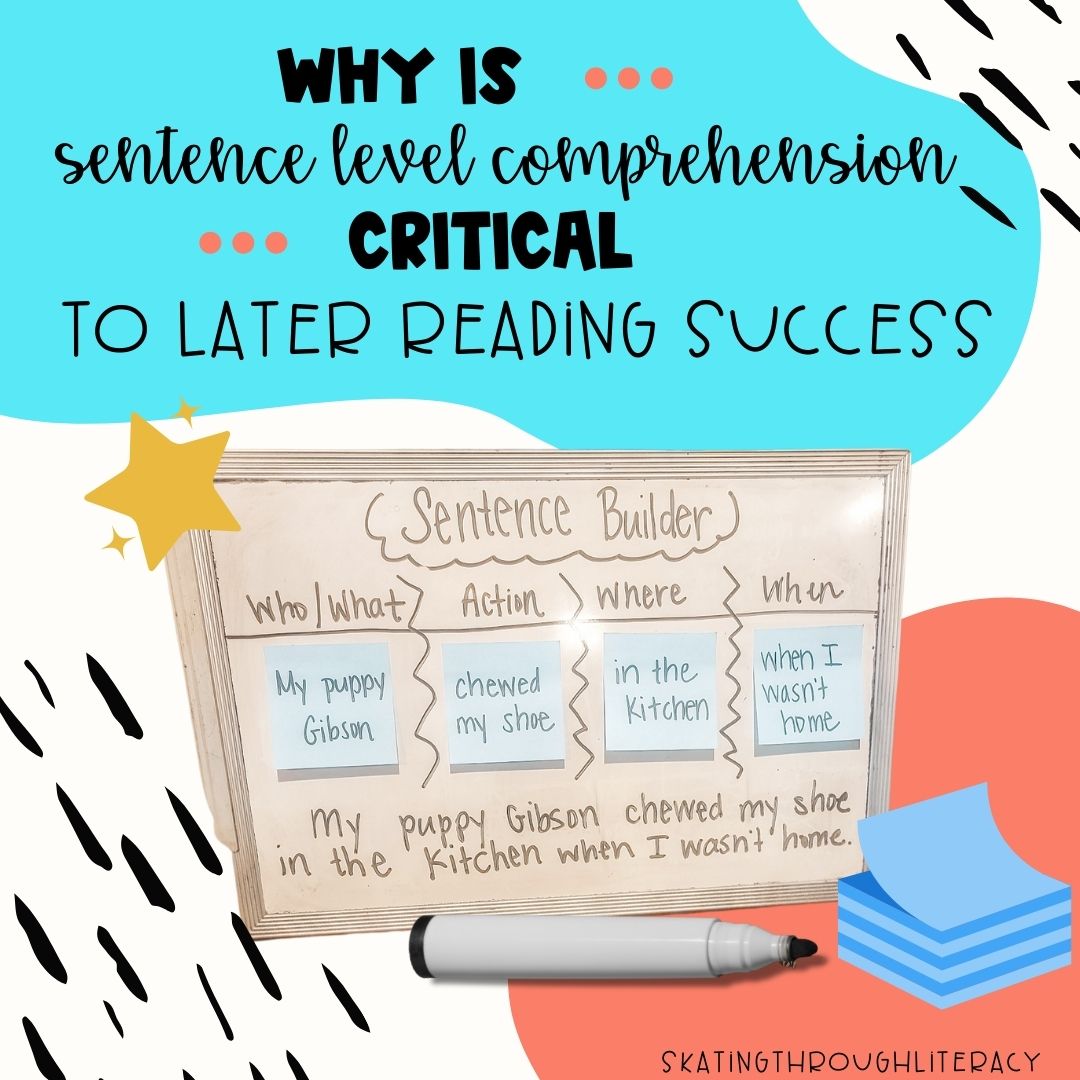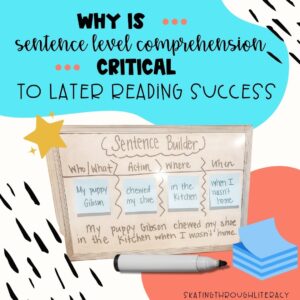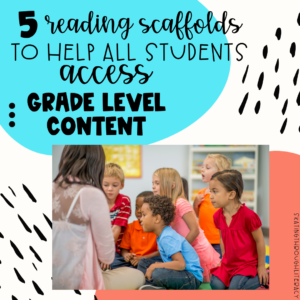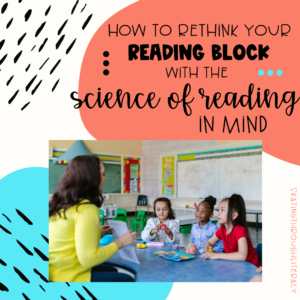Sentence level comprehension
Sentence level comprehension. The phrase in and of itself seems so simple. Yet it is a concept I found myself not explicitly teaching. I took for granted the power and importance of the sentence and often jumped straight into the paragraph or the whole text. When I started understanding the research behind the development of a sentence and language comprehension, I realized the errors of my ways. I began to see many of my students who struggled to comprehend, when brought back to the sentence level, often had deficits in understanding the function of words within a sentence.
If you’re new around here, my name is Jennifer, a once 3rd grade reading teacher now serving as a literacy consultant and instructional coach. Most of my blog starts exactly like this… me realizing the lack of knowledge behind my teaching practices. A once F&P guided reading guru, my world exploded, in the best way possible, when I was introduced to the science of reading. The research, practices, and knowledge changed everything for me and for my students. Now I dedicate every spare moment I have not in classrooms (or on the ice- full time ice skating coach!) to helping other teachers gain the knowledge they so badly are seeking to help their struggling readers. If you haven’t yet grabbed my free workbook 7 Ways to Revamp your Phonics Instruction starting tomorrow- be sure to download it, print it out, and join me on this educational journey.
Definition of sentence comprehension
So what is sentence comprehension and why does it matter? I often hear things from teachers like “They can’t tell me what they read about,” and “they stare at me blankly when I ask for a retell” when discussing comprehension. But comprehension, and reasons why it breaks down, is much more complex than this. These underlying causes for comprehension missteps could stem from a variety of underlying issues. And to complicate it further, those issues may or may not be related to one another. Background knowledge, knowledge of print concepts, verbal reasoning, syntax, and vocabulary can all affect comprehension in different ways. Yet each come to the surface as “comprehension issues.” Vocabulary development can also play a big part in comprehension issues. Be sure to check out my 5 ideas aligned with the science of reading when it comes to enhancing your vocabulary instruction.
A key shift in my career as a classroom teacher came when I began to understand how to look for these different areas within comprehension. Instead of overgeneralizing. One way I began was to examine a student’s understanding of a simple sentence. If a student struggles to understand the language of a singular sentence, of course there will be problems that arise when trying to understand a series of sentences. This can come down to “Does the child have a strong understanding of language structure or the syntax?” The syntax refers to how our system of language puts words, phrases, and clauses together to make meaning.
“The reader’s syntactic processing system must assemble the phrases and clauses into a set of underlying meaning relationships as they are read or heard.” LETRS Unit 6. Without this understanding how words relate to one another, you cannot develop deep comprehension of a text. Therefore, in order to understand a sentence, a student must understand how the words are put together. Order, multiple meaning words, punctuation, possessive and plural forms of words, and inflectional suffixes can all influence a sentence’s overall meaning.
Sentence structure
Students who experience difficulties comprehending sentences are usually struggling with the syntax. This means their ability to put words or groups of words together to make meaning is lacking. Students must understand the function of an individual word in a sentence before they can fully comprehend the sentence itself. Is the function of the word to be the what of a sentence? Is it the where? Or maybe its the when? By knowing the word’s job within a sentence, the brain can start to connect the meaning.
According to LETRS Unit 6 “Comprehension involves active construction of understanding as reading is taking place. These definitions imply that comprehension is not imprinting, memorization, or regurgitation, and that it cannot be accomplished very well unless the mind is actively engaged.” Unfortunately a teacher cannot simply have a student memorize if a word is a what, where, or when. The student has to be engaged within the process of meaning making to understand the function of words within sentences. So how do we do that?
Building sentence comprehension
In a study conducted by Ann Fowler and Phyllis Weaver, they found that students in grades 2 and 3 could improve their overall comprehension, simply by improving their sentence awareness and structure. Let’s start to discuss some concrete ways to this:
Categorizing phrases and clauses
In this activity, students work with phrases to determine their overall function within a sentence. Students have to classify a phrase based on the meaning it contains in a sentence. This could be the where or the what of the sentence. By categorizing language based on function, the brain is able to make meaningful connections which promotes long term memory. As a teacher, this can also be an eye opening activity to which students in your class may need more intensive intervention when it comes to sentence level comprehension instruction.
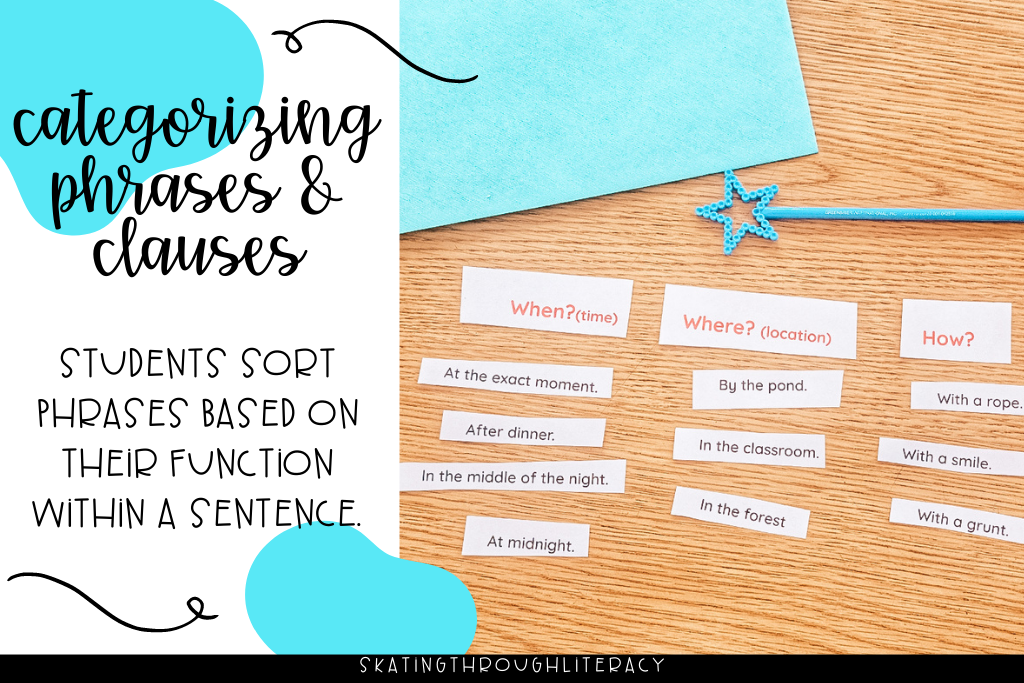
Sentence Anagrams
One way to build this sentence awareness or sentence comprehension is by using sentence anagrams. In this activity, students receive a complete sentence cut up into individual words. Students then have to take the words, and turn them into a sentence. Through this activity you are incorporating a hands-on multisensory approach to sentence comprehension work. It also is providing an opportunity for students to discover the flexibility some words could have depending on their placement or function within the sentence. This activity is great to introduce whole group. Then it can be moved to small group where more intensive instruction is needed.
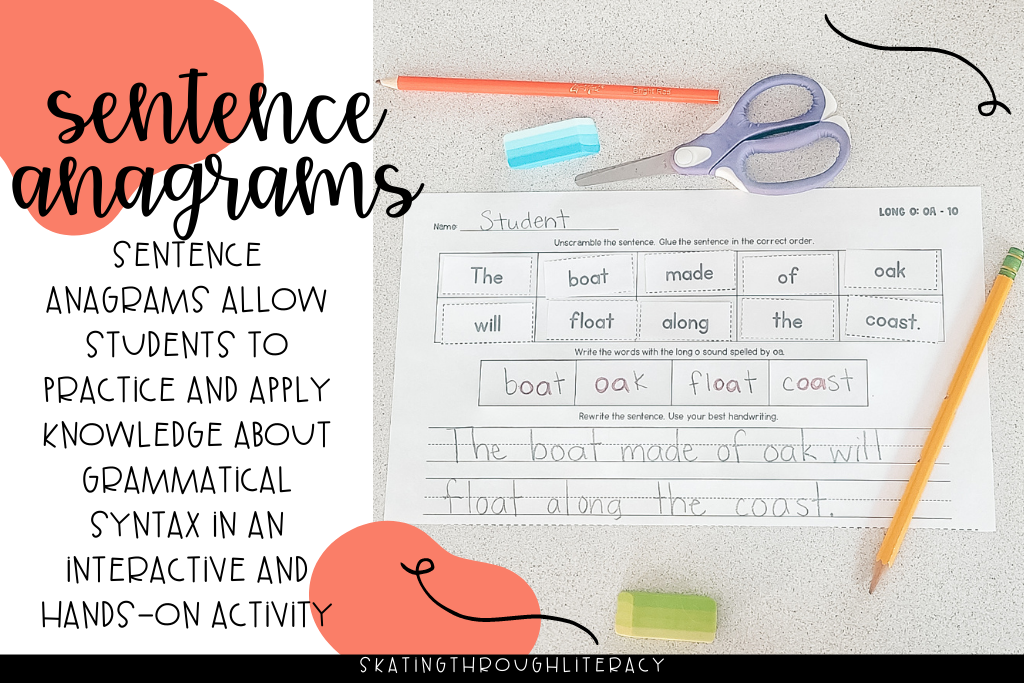
Building sentences
Once students have begun to master categorizing phrases on their own, it is time for them to begin building their own complex sentences. Having students develop their own unique sentences, with the focus of category, helps to transfer that learning to an even deeper level and more developed sentence. The best part of this is how easily you can differentiate this activity depending on your students needs.
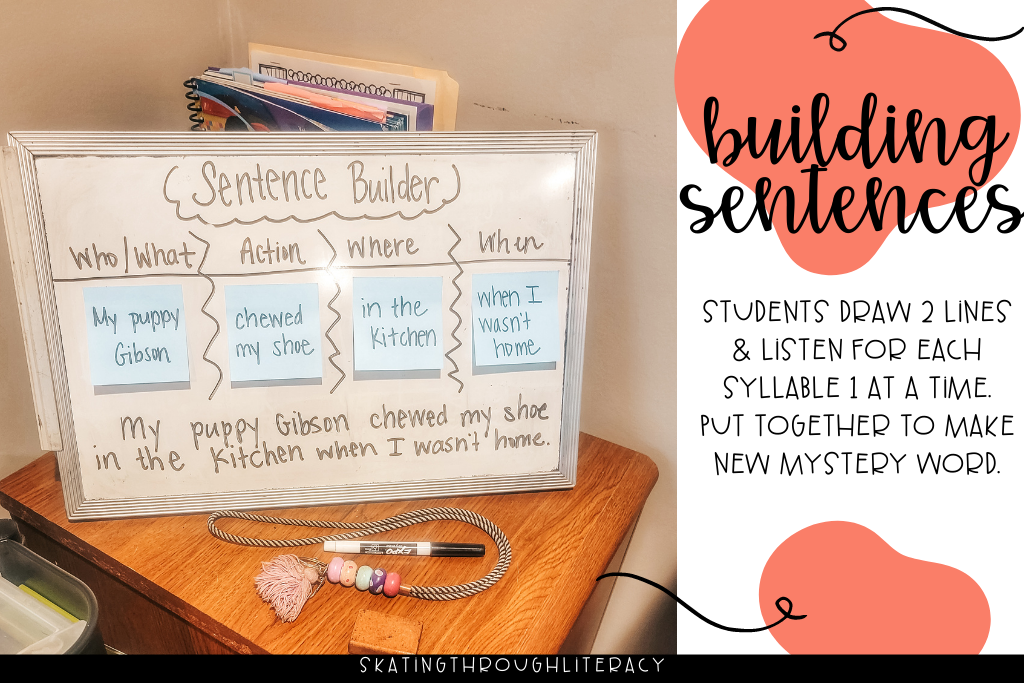
Let me know if you try any of these activities in your classroom and how they work for your students!

